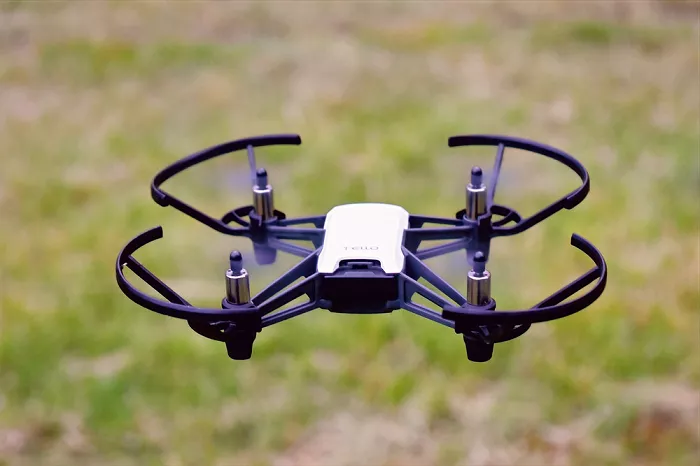The DJI Tello, developed by Ryze Tech in collaboration with DJI and Intel, is a compact and affordable drone designed for beginners and hobbyists. Priced around $99, it offers a blend of user-friendly features, educational programming capabilities, and decent flight performance. This article provides an in-depth look at the DJI Tello, examining its specifications, features, pros and cons, and overall value to help you determine if it’s the right drone for you.
Overview of the DJI Tello
The DJI Tello is a lightweight quadcopter that weighs approximately 80 grams, making it easy to transport and maneuver. Its compact size (98×92.5×41 mm) allows for indoor flying, and its durable design ensures it can withstand minor bumps and crashes. Equipped with a 5MP camera capable of capturing 720p HD video, the Tello provides a basic yet functional aerial photography experience.
Key Specifications
- Weight: Approximately 80 g (including propellers and battery)
- Dimensions: 98×92.5×41 mm
- Camera: 5MP photos, 720p HD video at 30fps
- Flight Time: Up to 13 minutes per charge
- Max Flight Distance: 100 meters
- Max Flight Height: 30 meters
- Max Speed: 8 m/s
- Battery: 3.8V 1100mAh Li-Po
- Connectivity: 2.4 GHz Wi-Fi, Micro USB charging port
Flight Performance
The Tello offers stable flight performance, thanks to its 6-axis gyroscope and Intel processor. It can perform aerial stunts like 8D flips and throw-and-go launches, adding fun to the flying experience. The drone’s Vision Positioning System helps maintain stability during indoor flights, making it suitable for beginners.
Camera Capabilities
While the Tello’s camera isn’t designed for professional photography, it delivers decent image quality for its price range. The 5MP camera captures clear photos, and the 720p video is adequate for casual use. Electronic Image Stabilization (EIS) helps reduce shakiness in videos, providing smoother footage.
Educational Features
One of the Tello’s standout features is its programmability. Users can learn coding by programming the drone using Scratch, a visual programming language. This feature makes the Tello an excellent tool for STEM education, allowing students to grasp basic programming concepts through interactive learning.
Pros and Cons
Pros:
- Affordable price point
- Lightweight and portable design
- User-friendly controls
- Programmable for educational purposes
- Decent flight time for its class
Cons:
- Limited camera capabilities
- Not suitable for outdoor flights in windy conditions
- Lacks GPS and advanced flight modes
User Experience
Users generally find the Tello easy to set up and operate. The Tello app provides an intuitive interface for controlling the drone and accessing features like EZ Shots, which automate certain flight patterns for capturing short videos. However, some users have noted that the drone’s performance can be affected by Wi-Fi interference, leading to occasional connectivity issues.
DJI Tello vs. Competitors (2024)
| Feature | DJI Tello | Ryze Tello EDU | Holy Stone HS170 | Potensic A20 |
|---|---|---|---|---|
| Camera | 5MP (720p) | 5MP (720p) | ❌ No | ❌ No |
| Flight Time | 13 min | 13 min | 8 min | 10 min |
| Stabilization | EIS | EIS | ❌ No | ❌ No |
| Programmable | ✅ (Scratch) | ✅ (Python) | ❌ No | ❌ No |
| Price | 99−129 | 129−149 | 40−60 | 50−70 |
Verdict: The Tello beats most toy drones with its camera and smart features, but the Tello EDU is better for coding.
Conclusion
The DJI Tello is a worthwhile investment for those new to drones or interested in learning the basics of flight and programming. Its affordability, ease of use, and educational features make it an excellent choice for beginners and students. While it may not satisfy the needs of professional photographers or advanced users, it offers great value for its intended audience.


